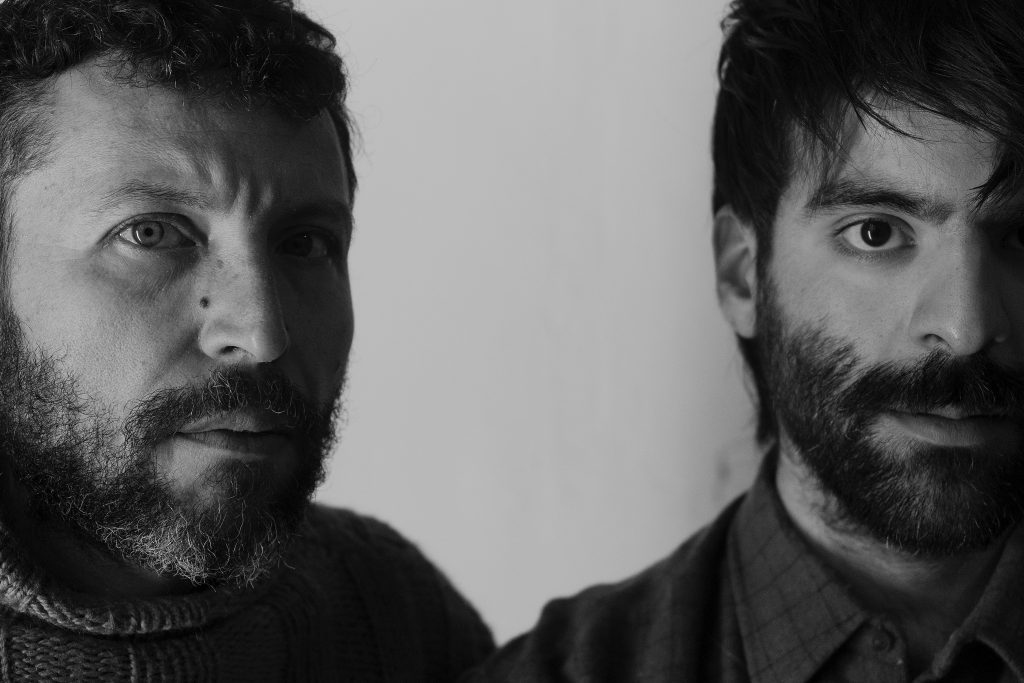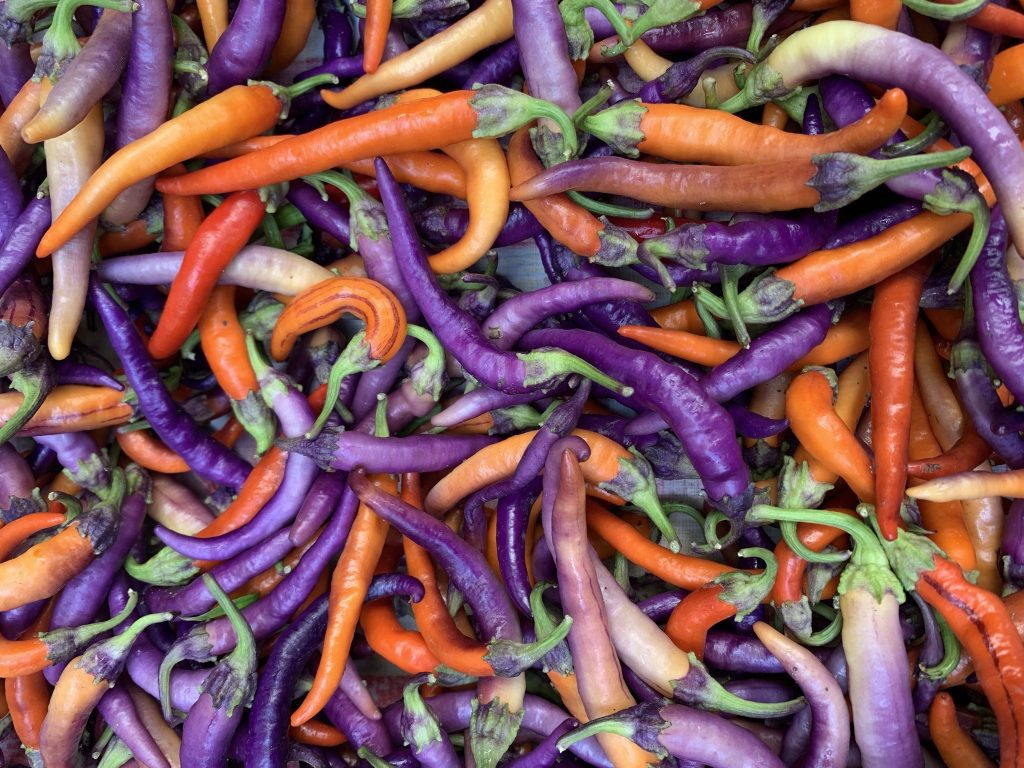Aterraterra in conversation with Izabela Anna Moren
For about two years, Luca and Fabio have been cultivating a vegetable garden in Piana dei Colli, nestled between the stadium and the Favorita park some kilometres outside the historic centre of Palermo. In this community plot, they grow wild food plants, flowers, medicinal and aromatic herbs and ancient, rare and organic vegetables delivered by bike to equally passionate residents and even more passionate local chefs.
But taste is not the only thing the duo is interested in. Theirs is an interspecies and intercultural dialogue in which all parameters are continually reassessed and negotiated between all the involved. Their association’s agricultural activity flows seamlessly into dismantling neo-coloniality, industrialisation and dominant discourses through the research of plant and culinary histories and collaborations that bring marginality to the centre.
The newly opened AterraterraLAB does exactly that, bringing the agricultural world from the rural margins and peripheries to enter the senses in the urban centre of Palermo.

Izabela Anna Moren: Soon, you will open the AterraterraLAB in the city, a good time to think about where you came from. You have different and distant backgrounds from agriculture; what did you do before in life, and how did you approach agriculture? Why did you feel the need to start Aterraterra?
Aterraterra: Fabio has a background as an artist and activist, and Luca comes from research and activism. Fabio was born and raised in Germany because he is the son of Sicilian migrants, but he moved to Palermo more than two years ago, where we met. We started almost as a game, shared a passion for plants and began our experiments in a small plot. We created a garden full of rare edible plants, special vegetable varieties and flowers in a short time. We learnt how to reproduce and save their seeds and got in touch with the soil, seeing it as a complex ecosystem of often invisible life forms to be recognised and respected. And it was during this time that we also began to reflect on the relationship between humans and other life forms and wrote the Manifesto for an Interspecies Collective. To give a more structured basis to projects like this one and others related to cultivation, we founded the Aterraterra association in 2020.
IAM: What are the beginnings of the Aterraterra association and your land near La Favorita, what was the path and what did you learn?
A: We started cultivating this small piece of land during the first season, buying seedlings ready to transplant. When harvest time came, we tasted the cauliflowers, chard and other vegetables. To our surprise, they tasted nothing different from the vegetables in the supermarket. Fabio, who remembered well the taste of the vegetables he tasted in Sicily as a child when he came on summer holidays, did not find much difference between the vegetables from our garden and those he bought in Germany. From that moment on, we started thorough research on varieties, retrieving from old farmers and others seeds of ‘ancient’ and rare vegetables. The large market marginalises these varieties because they often lack commercial characteristics such as homogeneity or are unsuitable for distribution. On the other hand, they taste great and, above all, have great genetic variability, unlike the seedlings we find in nurseries, which are often produced by large companies that create F1 hybrids that are very homogeneous genetically, rather tasteless and far from the genetic diversity we see in nature. Furthermore, unlike the non-commercial varieties we grow, these hybrids will give seeds from which plants with characteristics that are not always desirable will be born.
Thus began our adventure with rare and reproducible seed species and varieties: from the lemon courgette to the lychee tomato, from several rare aubergine varieties to the many chillies with exquisite shapes and aromas. Our interest in wild food plants also began shortly afterwards, both for their organoleptic characteristics and their importance for eco-sustainability. At the same time, we began our research into the relationship between food plants and (neo-)colonialism, fascism, anti-Semitism, racism, sexism and other forms of discrimination and/or difficult heritage. Examples of this are the Ethiopian red aubergine (Solanum aethiopicum) in Italy, known only as the red aubergine of Rotonda (often ignoring the reasons for its arrival in Italy, linked to colonialism) or the ancient grains that are so much celebrated today and which are not so ancient but largely created during the fascist era.
IAM: Do you have allies in Italy or the world with whom you can discuss a shared future? How does the network of independent producers work?
A: Fortunately, yes, a network of people and institutions, both Italian and international, has formed around Aterraterra, with whom there is a continuous dialogue. We have started joint projects with many of these, many of which are taking shape within the AterraterraLAB programme. These are artists, activists, agricultural cooperatives, agricultural labourers, cultural associations, cooks, scientists, etc. The aim is to bring together subjects from disciplines unrelated to agriculture, to open a multidisciplinary discussion table to pose questions from different points of view and to search together for ways and practices to imagine a more sustainable and perhaps less human-centred future.
IAM: I often wonder about the role of the consumer, how to convince someone not to go to the supermarket but to invest in a product that is healthy for humans and the earth, grown without chemicals and with an attitude that does not extract vitality from the earth or those who grow the produce? What is the role of the consumer in your work?
A: This is a complex and important question that will be a bit long to answer. The consumer should perhaps cease to exist as an isolated category. The fact that there is such a thing as a consumer, that is, someone who merely consumes, presupposes its separation from the thing to be consumed. Let us take the case of vegetables. In this view, what is consumed is a plant, or a part of it – that part deemed edible by the market – which ends up as merchandise ready for sale, dressed in its packaging on the supermarket shelf.
We think that the only way to have a fairer and more conscious agriculture and food, as well as a fairer market, is to involve the consumer in the growing process, to bring the consumer back to know the plants that are creating food for his or her life. A courgette in the supermarket is ultimately nothing more than an amputated part of a plant. A plant that few consumers will see entirely in their lifetime. Let alone get to know the farmer who grows it. We are not saying that all consumers should come to the fields to see the plants and learn how they are grown. But still, the large-scale distribution model has created an enormous filter between those who produce the food – namely the plants and the farmers – and those who eat it, namely the consumers. This aberrant condition is not good for plants and the environment, not for farmers and consumers. It is only good for big retailers. A solution? Start looking around: there are lots and lots of small farmers near us, and even if contemporary life fits very well with supermarket opening times and often does not allow us the time to look for the producers directly, sometimes it is enough (if our living conditions allow it) to review our priorities a little.

IAM: Your last year is a year of great growth: you are carrying out an experimental project on a larger plot of land together with the Valdibella Cooperative. You are also opening your first physical space in the city, not dedicated to cultivation. What plans do you have for the Aterraterra Lab?
A: We have a special relationship with the Valdibella Agricultural Cooperative. Last spring, we activated the From Seed to Seed project, an experimental field where we cultivate different varieties of special vegetables with reproducible seeds. The aim is to demonstrate that it is possible to grow special vegetable varieties even on a larger scale than a small vegetable garden without starting from F1 hybrid seedlings produced by large seed companies. With this project, we propose returning to working with seeds, re-learning how to reproduce and save them. The problem we are trying to respond to is the following: the huge spread of vegetable seedlings offered by these companies has very quickly led to the loss of a huge amount of local, rare or marginal varieties that have been handed down for a long time and have been supplanted by hybrid varieties. This has led to an enormous loss of biodiversity, the dependence of farmers on externally produced seeds and seedlings, and a flattening of vegetable flavours to which we are unfortunately becoming increasingly accustomed. Working from the seeds of rare and special varieties is an important challenge that helps biodiversity and increases the autonomy of those who grow and the quality of those who eat.
This and many other topics will be the focus of AterraterraLAB, our physical space in Palermo that opens on 1 December. AterraterraLAB will be an open place for discussion and creation, where different formats will alternate, and different disciplines will enter into dialogue. There will be space for talks, artist residencies, assemblies, workshops, and screenings. A place that will promote dialogue and the intersection of agriculture, art and activism, attempting to bring about a collective process of thought construction and the activation of new practices.
The AterraterraLAB will open its doors on 1 December 2023 and is part of Studio Rizoma’s institutional fellowship program.
